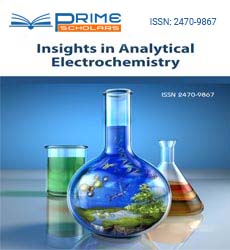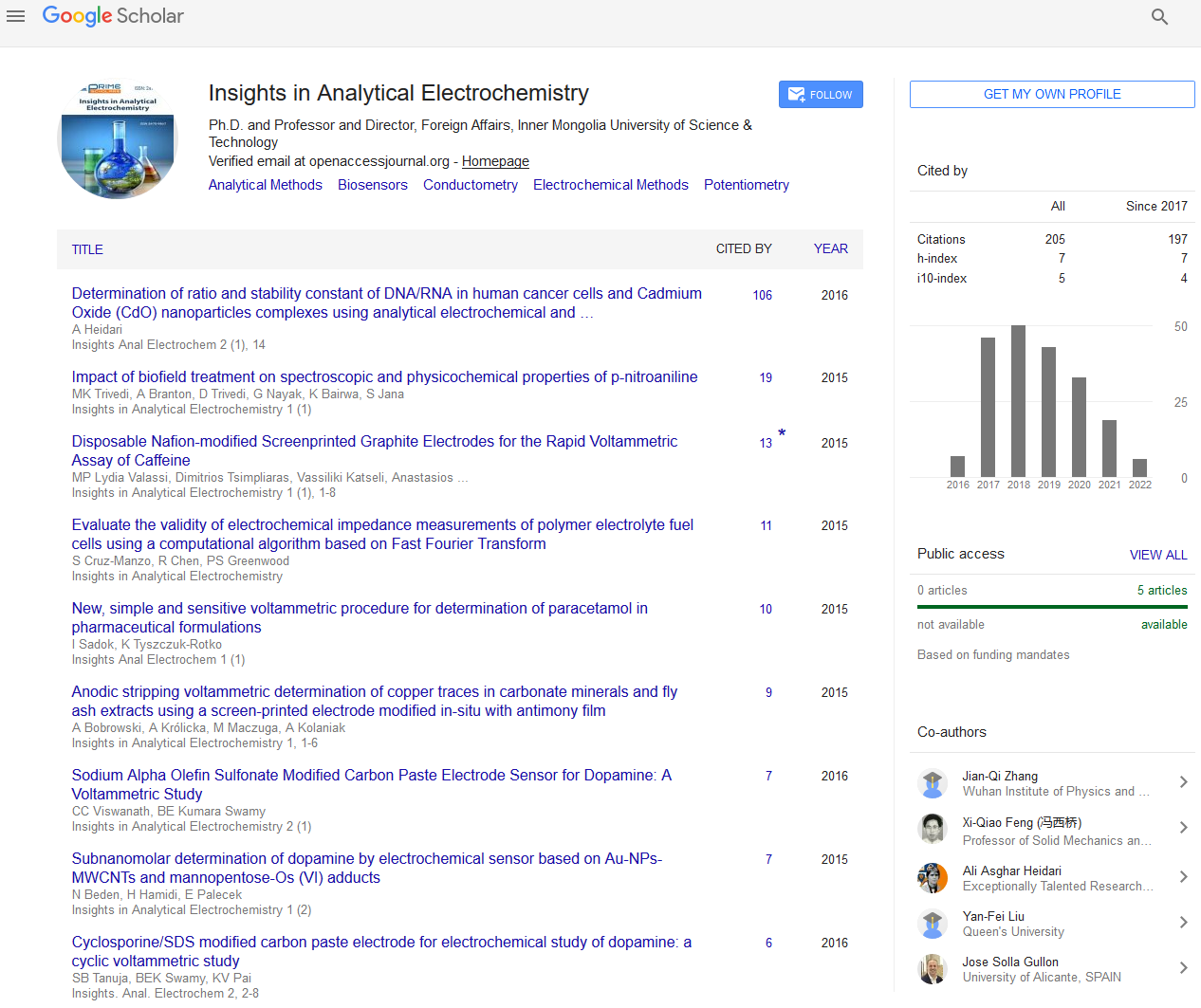Perspective - (2023) Volume 9, Issue 3
Embracing Potentiostatic Techniques: A Paradigm Shift in Electrochemical Analysis
Su Moon Park*
Department of Chemistry, Vietnam Academy of Science and Technology, Vietnam
*Correspondence:
Su Moon Park,
Department of Chemistry, Vietnam Academy of Science and Technology,
Vietnam,
Email:
Received: 30-Aug-2023, Manuscript No. ipaei-23-18180;
Editor assigned: 01-Sep-2023, Pre QC No. ipaei-23-18180 (PQ);
Reviewed: 15-Sep-2023, QC No. ipaei-23-18180;
Revised: 20-Sep-2023, Manuscript No. ipaei-23-18180 (R);
Published:
27-Sep-2023, DOI: 10.21767/2470-9867-9.3.28
Introduction
In the realm of electrochemical analysis, the use of potentiostatic
techniques marks a significant advancement that promises
to reshape the landscape of analytical methods. Potentiostatic
techniques involve maintaining a constant potential
between working and reference electrodes, allowing for precise
control over electrochemical reactions. This approach has
garnered attention for its versatility and accuracy, offering a
promising avenue for researchers and analysts in various fields.
Description
Potentiostatic techniques provide a level of precision that is
unparalleled in electrochemical analysis. By maintaining a constant
potential, researchers can meticulously control reaction
conditions, ensuring reproducibility and reliability of results.
This precision is particularly crucial in fields such as pharmaceuticals,
environmental monitoring, and materials science,
where minute variations can have significant implications. One
of the key advantages of potentiostatic techniques is their ability
to enable real-time monitoring and control of electrochemical
processes. This feature is particularly valuable in applications
such as corrosion studies, where continuous observation
of metal degradation is essential. Researchers can intervene
promptly, adjusting parameters to mitigate adverse effects and
optimize performance.
Potentiostatic techniques exhibit remarkable versatility, making
them applicable across a spectrum of scientific disciplines.
From studying fundamental electrochemical processes to developing
cutting-edge technologies, the adaptability of potentiostatic
methods is a boon. In bioelectrochemistry, for instance,
these techniques facilitate the study of redox reactions
within biological systems, paving the way for advancements in
medical diagnostics and treatment. The use of potentiostatic
techniques aligns with the growing emphasis on sustainable
practices in scientific research. By minimizing the consumption
of reagents and optimizing reaction conditions, these methods
contribute to the reduction of environmental impact associated
with laboratory activities. The ability to precisely control
electrochemical reactions also leads to improved resource efficiency,
aligning with the principles of green chemistry.
While potentiostatic techniques hold immense promise, challenges
persist in their widespread adoption. The need for
specialized equipment and expertise may pose barriers for
some researchers. Overcoming these challenges requires collaborative
efforts within the scientific community to develop
user-friendly instrumentation and educational resources. Furthermore,
continuous innovation is necessary to expand the
applicability of potentiostatic techniques. Researchers are exploring
novel electrode materials, developing advanced sensor
designs, and integrating artificial intelligence for enhanced
data analysis. Such innovations will not only address current
limitations but also open new avenues for exploration.
Conclusion
Potentiostatic techniques represent a paradigm shift in electrochemical
analysis, offering unparalleled precision, real-time
monitoring, and versatility across disciplines. As we navigate
the complex challenges of the 21st century, these methods
emerge as valuable tools in the researcher’s arsenal. Embracing
potentiostatic techniques is not merely a scientific choice
but a conscientious step towards sustainable and impactful analytical
practices. In the coming years, as technology evolves
and collaborative efforts drive innovation, potentiostatic techniques
are poised to redefine the boundaries of electrochemical
analysis. By unlocking new possibilities and addressing current
limitations, these methods will undoubtedly contribute to
the advancement of scientific knowledge and the development
of solutions to pressing global challenges.
Citation: Park SM (2023) Embracing Potentiostatic Techniques: A Paradigm Shift in Electrochemical Analysis. Insights Anal Electrochem. 9:28.
Copyright: © 2023 Park SM. This is an open-access article distributed under the terms of the Creative Commons Attribution License, which permits unrestricted use, distribution, and reproduction in any medium, provided the original author and source are credited.

